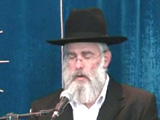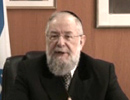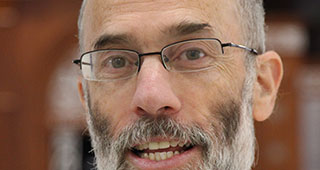Beit Midrash
- Sections
- Chemdat Yamim
- Parashat Hashavua
- Shabbat and Holidays
- Passover - Pesach
- Shabbat Hagadol
There are three introductory Shabbatot for the holiday of Pesach: Parashat Parah, Parashat Hachodesh, and Shabbat Hagadol.
Parashat Parah is the reading of purification. It is true that in general, one is supposed to purify himself before a holiday (Rosh Hashana 16b). However, on Pesach there is a special reason to be pure, so that one can take part in the Korban Pesach. Liberation must come from amidst purity. If we would view the value of liberty as just the lack of being controlled by another nation, then the whole stress on purification would be unimportant. However, our goal is to have a life built on something specific and special, and for this there is a need for inspecting our ways and for purification.
Parashat Hachodesh is about renewal, starting with the moon to which we set our calendar. Part of the moon’s nature is that it is renewed just when it gets to the point of darkness.
Shabbat Hagadol possesses two elements – the Shabbat of creation and the Shabbat of Israel. As any Shabbat, it has the commands of "Zachor" (remember) and "Shamor" (observe) – remember the creation and observe the matter of the Exodus from Egypt. The Shamor comes to make Zachor a social obligation that serves as the basis for all of social life.
The goal of these three introductions is to show the essential content of Jewish nationalism, which finds expression in the Holiday of Freedom. That is to turn the divine idea into a factor that impacts on national, political, and social life. This requires an exact plan, which requires inspecting the nation’s actions from time to time – this is the idea of purification before holidays.
This requires making sure that life is lived in a way that is in synch with the changing conditions from time to time. In this regard, things must be checked according to their internal content, despite the fact that there are external changes that need attention. This is included in the idea of Parashat Hachodesh. All of these ideas find special attention on Shabbat, which, in turn, finds its fullest meaning on Shabbat Hagadol.

Parashat Hashavua: Divinely Ordained Sibling Deceit
Rabbi Yossef Carmel | Cheshvan 5786

The National Significance of Intergenerational Connection
Rabbi Yossef Carmel | Kislev 1 5783

Build Carefully
Rabbi Yossef Carmel | 5769

Parashat Hashavua: “Kings Will Descend from You”
Rabbi Yossef Carmel | Kislev 5786

Rabbi Shaul Yisraeli zt"l
Rosh Yeshiva of "Mercaz Harav", Rosh Kollel of "Eretz Hemda" and a member of Beit Din Hagadol in Yerushalaim.

The Place of Tumah in the Human Experience
based on Siach Shaul, pg. 328-330
Iyar 5773

Hanukah Candles
Kislev 5762

Down to the Earth and Up to the Sky
Tishrei 4 5779






















